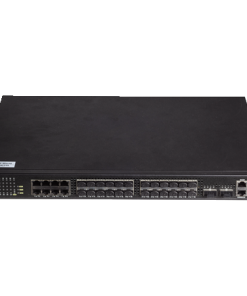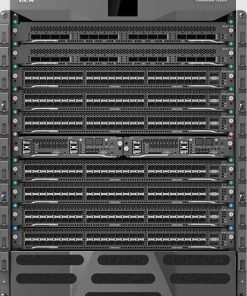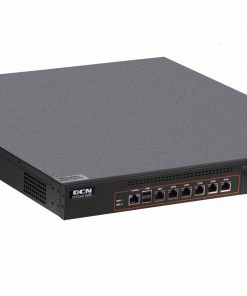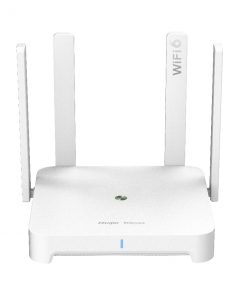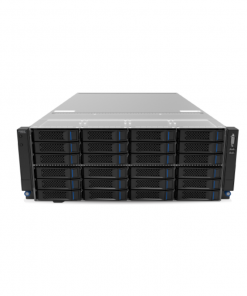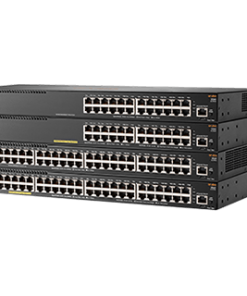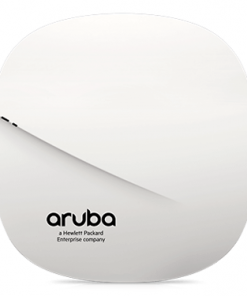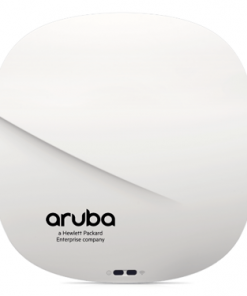Table of Contents
What To Do When EOL Device?
Discussing EOL might make IT admins anxious, especially if the company has a limited budget in this regard. In short, EOL can be defined as a notification that gives a signal to the user to change a product or device.
If using the analogy of a food product, EOL can be equated with an expiration date, which is the date stating that a food product has passed its consumption period.
Difference Between EOL, EOS & EOSL
There are many reasons why OEMs claim that a product has entered the EOL period. Some of these reasons include changes in market demand, the discovery of new technology, or indeed the product can no longer accommodate the needs of other devices. So do not be surprised if a device has entered the EOL period, companies are required to update the device.
The reality on the ground is not always the case. Several technologies were created for use during the EOL period itself. Then the question is, why does a company need to know about EOL, EOS, & EOSL? Before getting confused, here are the meanings of each of these terms;
- EOL
End of Life indicates that a product has ended its useful life, from an OEM point of view. During this time, the OEM will cease all marketing, sales, or support activity for the product.
- EOS
End of Sale refers to the last date when a product can be ordered. Once this date has passed, the product is officially withdrawn from the market and is no longer available for sale. Usually, shortly after the announcement date of EOS, OEMs will immediately stop supporting all kinds of product-related issues.
- EOSL
End of Service Life means all service & support updates for devices are no longer performed by OEMs. During this time, OEMs will even end their support contracts altogether.
The explanation above also answers the previous question. By knowing the EOL period of a device, it will help companies prepare for device updates. As we know, the process of updating devices in companies is not as easy and fast as for individuals, it requires careful and careful planning. That is the importance of knowing the EOL period of a device for a company.
What are OEM and TPM?
Does anyone know what OEM is? Original Equipment Manufacturers or abbreviated as OEM is a brand of network equipment that is well known to many people, ranging from Cisco, Juniper, Fortinet and others.
For example, when purchasing Cisco equipment from an OEM, it is often the primary party offering service support, known as service maintenance . Actually network maintenance services have other options, not just OEM. There are also maintenance services provided by other companies (other than the principal) that have the ability to maintain the equipment which is commonly called Third Party Maintenance.
In simple terms, TPM (Third Party Maintenance) is a maintenance service provided by a third party, or indirectly by the principal. An example is NDS. Meanwhile, OEM is a maintenance service provided directly by the principal to maintain your IT equipment. For example: Cisco, Juniper, Ubiquity, Aruba & Fortinet.
Why does a TPM appear when OEM Cisco itself provides maintenance services? The first reason is efficiency, because the cost of maintaining Cisco equipment that is not cheap can eat up to 70 percent of a company’s IT budget. Efficiency is everything in the IT world. From cost to labor to functionality, efficiency is the focus of businesses around the world. As businesses adjust to the digital age, they also expect efficiency to occur among IT professionals, which is one of the reasons – despite the skyrocketing workload of IT professionals – IT department budgets only grew by $ 2,000 in 2016.With
tight budgets, finding new ways to cut costs and increase efficiency is very important. For some businesses, network or device support is one of the best places to start. Many companies are looking for better sources for network and equipment maintenance, so TPM has emerged as an alternative solution. Even so, many companies are still confused about whether to use OEM or TPM support alone to maintain their Cisco networks or devices.
View NetData Router Products here:
Advantages and Disadvantages of OEM Support The advantage ofOEM support
Cisco is that they usually provide maintenance services for the first 1-3 years after purchase and provide an option to extend if the period is up.
Because the Cisco OEMs are the ones who develop and manufacture Cisco products themselves, they are often seen as the girlfriend of these devices.
It is only natural for these views to emerge as they have deep engineering knowledge and provide the necessary software updates and upgrades. OEMs will frequently discontinue product and support to create obsolescence and encourage technology refreshes.

But Cisco OEM support isn’t necessarily lacking. These network maintenance services initially come at a reasonable price. In fact, some OEMs other than Cisco offer free support and setup service within the first few months of purchase. The prices then started to change after a few years.
Companies may start to see bills increase. This was clearly not an administrative error, and was most likely indicated on the service contract at the time of purchase. And it’s worth noting that OEMs do this on purpose.
Here are some reasons why OEMs are deliberately raising prices incrementally as described above;
- Support Services Training. OEMs must train their staff to repair any equipment that is still supported. This means that each time there is a new product line, the more training is needed, the more devices used, the longer the training period. By increasing the cost of supporting older models, OEMs are also encouraging their users to upgrade their systems. Automatically, this will make it easier for them to remove old models and remove them from their training program. This is called End of Life or EOL.
- New Model Sales Support. By increasing the price of the old model, OEM indirectly encourages customers to buy the new model product. On the OEM side, their product sales are increasing. Meanwhile, from the customer side, they can be overwhelmed if they are not ready to spend a lot of money.
The Pros and Cons of Third Party Maintenance The
TPM is usually the most efficient option for maintaining Cisco devices. Following are the advantages of TPM:
- Cost savings. The essence of business is to reduce costs without sacrificing quality. Switching from OEM to TPM is one of the best ways to do this.
- Increased Efficiency and Flexibility.Most servers use equipment from multiple OEMs, which in turn results in expensive support services to perform maintenance. Instead of having to use support from every OEM every time something goes wrong, it’s a good idea to use a TPM to solve the problem as a whole.
- Extend Device Life.Most OEMs will recommend replacing equipment before the EOL date, 5 to 10 years after the model is released. After the EOL date, OEMs will discontinue their support for hardware. However, the average functional life of network hardware is often more than OEMs say. Unfortunately, a lack of support from OEMs resulted in over 85 percent of users dumping their old systems prematurely. To solve this problem, TPM offers support for older hardware, up to 10 years after their EOL date has passed, effectively extending the life while reducing the cost of replacing the device.
- Customizable Package.Of all the problems with OEM service providers, the lack of flexibility is what frustrates companies the most. OEM support services usually come for a single flat rate covering all of the basic OEM support functions, most of which only apply to a specific type of business. As the equipment ages, this rate will increase as described above. For companies, of course this is not a good thing, because it means that the company has to pay more for services that are not needed. The solution, TPM offers an alternative solution in the form of a customizable service package. Instead of paying a single flat rate for a package of services that aren’t all used, companies can choose specific services that are clearly needed. In the end, the company pays only what it needs – no more, no less.
The disadvantage of TPM is that because TPM is a third party and not a direct Cisco OEM, many companies are still hesitant to entrust the maintenance of their Cisco equipment to the TPM.
Myth Regarding Cisco Maintenance by TPM
The first myth is, “Switching to TPM support is too risky and sometimes, the savings aren’t even worth the risk.”
Many lay people believe that supporting TPM will put your company at great risk. This doubt is a misconception arising from many people who think that TPM support is limited in terms of capability and quality of service when compared to Cisco OEM support. In reality in the field, TPM has the same or even better ability to support not just one OEM product, but a whole.
The second myth is, “Only OEMs have the ability to support OEM devices”. This myth comes from the assumption that OEMs only focus on one platform, so that OEMs can automatically provide a better service. This is not quite true. The reason is, it’s important to know that the OEM business focus is on designing, developing and selling hardware – not about maintenance.
The third myth is “Only OEMs have access to the right parts”. In the past, when IT maintenance work was not as extensive as it is today, TPM support only had access to old or low-quality parts. But in this day and age, most OEMs have a dedicated line that TPM can also access. In addition, some OEMs have even worked with certain TPMs under a contract to provide access to spare parts which are then used to support TPM in running their business. Now, TPM providers not only have access to all of the same parts as OEMs, but they can also support devices after the device’s warranty period has ended.
Which is better, OEM or TPM?
Still confused about which Cisco device to care for? Below we summarize all the points in this article:
- Maintenance Costs
TPMwill reduce your maintenance costs but savings will vary based on your Cisco device type. (TPM Advantage)
- experts
OEMhave deep engineering expertise in their products as well as updates and firmware. TPM providers also have extensive engineering facilities and their technicians are certified on several OEM products and can complete updates / upgrades. (OEM Advantage)
- Device Lifecycle
Extends the life cycle of existing assets without impacting operations should be reviewed. Are there opportunities to postpone a technology refresh and avoid current capital outlays? Can the product be supported for longer and have a part replacement plan without increasing support costs? (TPM Advantage)TPM
- The Response Time
allows the ability to mix and match service levels in one location. OEMs have a standard service offering. Global coverage can be handled by the TPM while OEMs will often resort to assistance outsourcing. OEM support will spend time making sure it is their brand as long as a problem occurs rather than solving the problem. This allows the TPM to reduce the time from call to delivery. (Benefits of TPM)
- Flexibility
Do you have the ability to match service levels? Do you want to manage multiple OEM contracts or just one contract? Most OEMs each have their own standards and you will have to manage each of them. (TPM Advantages)
As another alternative, using TPM or Third Party Maintenance could be a solution. Because, although OEMs manufacture and provide support for hardware, the main focus of TPM’s job is to provide resale and service support.
“OEMs are not in the business of maintaining EOL or EOS devices, their business is developing new devices to replace existing ones, which is why your support costs continue to increase after the warranty period ends. On the other hand, TPM not only supports post-warranty devices, but also searches, tests, and stockpiles old devices. “Solutions
When Devices Enter the EOL Period Regardless of OEM and TPM
As stated above, knowing the EOL period is a way to help companies to prepare. Usually, when a product or device has entered the EOL period, there will be a notification or email regarding this information. Each OEM has its own policy regarding the process so that information can differ from one another. But in essence, it is a notification or email that can be used as a benchmark when the company has to be ready to implement a device update
What happens when the company ignores it? The biggest obvious risk is security. OEM support that previously included device security updates has run out, therefore, when the company does not perform independent maintenance or use third-party services, the device becomes not terribly protected. Not to mention there are other problems such as data loss, damaged devices, lost, or even natural disasters.solution
Another For companies that are going to upgrade their devices is to buy a new device. crime in the secondary market. The secondary market provides used equipment whose quality is guaranteed by OEM, which is commonly referred to as refurbished products.
There is a lot of misinformation circulating in the community regarding the purchase of devices on the secondary market. One of them is that the purchased device is not as good as OEM. In fact, sales on the secondary market through the right partners always provide equipment of the same quality as new equipment, only at a relatively lower price. This is because refurbished goods have actually passed quality control by OEMs themselves.
![]()


